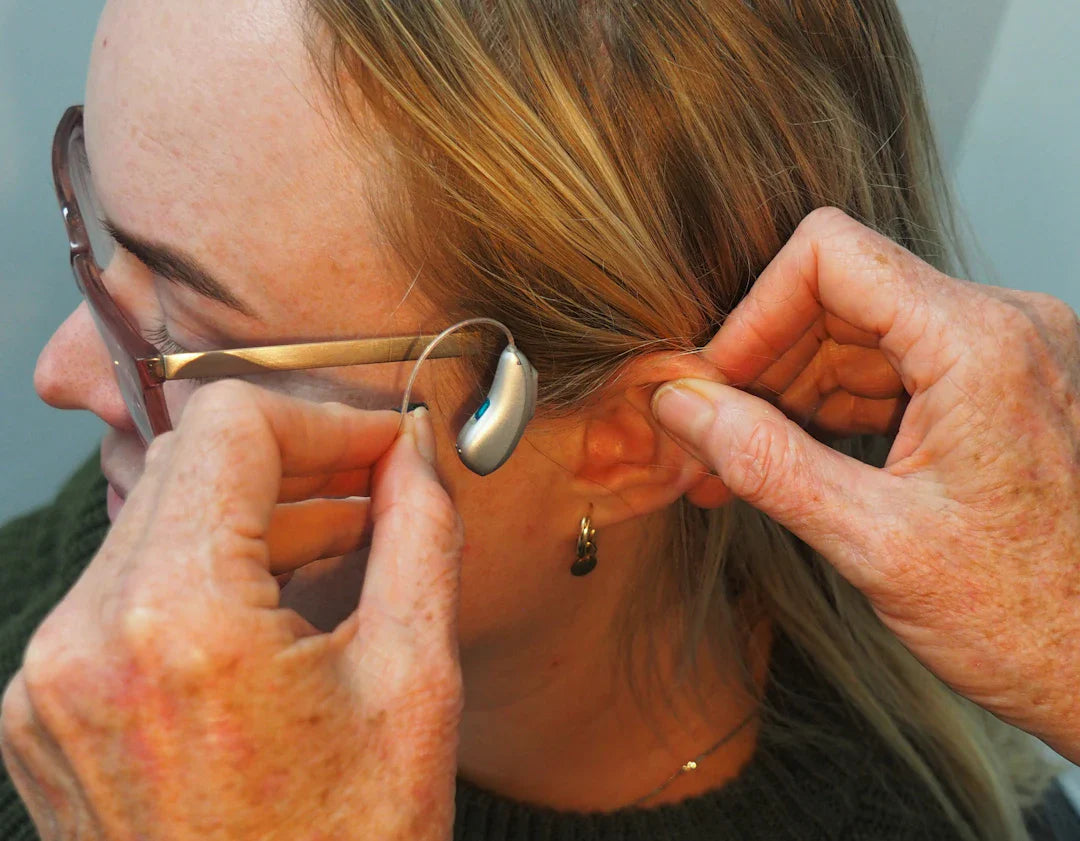Frequently Asked Questions
1. Do hearing aids restore hearing to normal?
2. Are hearing aids only for the elderly?
3. Are hearing aids bulky and obvious?
4. Do you need to see an audiologist after getting hearing aids?
5. Can hearing aids help in noisy environments?
Hearing aids have become an essential tool for individuals experiencing hearing impairment. However, misconceptions about these devices often lead to misunderstandings concerning their functionality, effectiveness, and even the stigma surrounding them. In this article, we will debunk some of the most common myths about hearing aids, ensuring you have all the facts straight before making any decisions regarding your hearing health.
Myth 1: Hearing Aids Restore Hearing to Normal
One of the most prevalent myths is that hearing aids can completely restore hearing to what it once was. The truth is a bit different. Hearing aids, such as the Widex CROS, are designed to amplify sound and improve hearing but do not return your hearing to a natural state. They help users hear better in various environments, but depending on the severity of the hearing loss, there might still be limitations.
Understanding Hearing Loss
Audiology is the field dedicated to diagnosing and treating hearing loss. Audiologists emphasise that while hearing aids significantly enhance the quality of life for many, they are not a cure-all solution. Each individual’s hearing ability is unique, and effective communication may still require additional support, like speech therapy or communication strategies.
Myth 2: Hearing Aids Are Only for the Elderly
Another common misconception is that hearing aids are exclusively for older adults. In reality, hearing loss can affect anyone, regardless of age. Children, teenagers, and young adults can also experience hearing impairment due to various factors, including genetic predispositions, exposure to loud noises, or certain medical conditions.
Hearing Health Across Generations
It's crucial to foster an environment that promotes hearing health for all ages. Regular hearing evaluations are essential, especially for those at higher risk, such as musicians and construction workers. By normalising the conversation around hearing loss, we can encourage people of all ages to seek help when necessary.
Myth 3: Hearing Aids Are Bulky and Obvious
Thanks to advancements in technology, hearing aids have come a long way from the bulky devices of the past. Today’s options are sleek, discreet, and come in various styles designed to meet individual preferences. Many modern hearing aids are even available as completely in-canal options, which render them almost invisible to the naked eye.
Choosing the Right Style
When selecting a hearing aid, it's important to discuss your needs with an audiologist. They can guide you through choosing a voice that fits your lifestyle, aesthetic preference, and budget. It’s important to remember that modern hearing aids, including the Widex CROS, seamlessly integrate into daily life without drawing attention.
Myth 4: Once You Get Hearing Aids, You Won’t Need to See an Audiologist Again
Some people mistakenly assume that once they acquire hearing aids, they are set for life. However, regular check-ups with an audiologist are essential in maintaining hearing health. This ongoing relationship ensures that your hearing aids are functioning optimally and can be adjusted as your hearing needs change over time.
Ongoing Monitoring
Just like other healthcare devices, hearing aids require routine maintenance and possible upgrades. An audiologist will provide essential services, such as cleaning, adjustments, and programming your device to ensure it meets your hearing needs effectively.
Myth 5: Hearing Aids Can Only Help in Quiet Environments
Many think that hearing aids are ineffective in noisy settings, but this is not necessarily true. Most contemporary hearing aids are equipped with advanced technology that can filter out background noise and focus on specific sounds, making communication easier even in bustling environments.
The Role of Technology
Innovative features, such as directional microphones and noise reduction algorithms, enhance the hearing experience for users, allowing them to engage in conversations in various environments—from lively restaurants to crowded family gatherings. Understanding the available technologies can empower users to maximise their hearing aids' potential.
Myth 6: Hearing Aids Are Too Expensive
The cost of hearing aids can indeed be a daunting factor. However, it’s essential to consider them as an investment rather than an expense. The cost can vary widely based on the technology, features, and customisations required, but many services offer financing and payment plans to suit different budgets.
Exploring Financial Options
Many audiology practices provide various options for financing, making it more feasible for individuals to access the hearing aids they need. Additionally, it’s worth checking whether your health insurance covers a portion of the costs associated with audiology services and hearing aids.
Myth 7: You Can Buy Hearing Aids Without Professional Help
Another hazardous misconception is that hearing aids can be purchased over-the-counter without professional assistance. While certain personal sound amplification products (PSAPs) are available, they do not substitute for medically necessary hearing aids. Consulting with an audiologist is essential to ensure you're getting a device suited to your specific type of hearing loss.
The Importance of Professional Guidance
Only through a comprehensive audiological evaluation can an audiologist determine the best device and settings for your particular needs. They also assist in properly fitting and programming your hearing aids to ensure the best possible hearing experience.
Myth 8: Hearing Aids Will Ruin Residual Hearing
Some potential users worry that using hearing aids might worsen their hearing over time. This myth insists that relying on devices can weaken remaining hearing capabilities. In reality, hearing aids are designed to amplify sounds without damaging hearing further. In fact, wearing hearing aids can help prevent the brain from forgetting sounds as a result of hearing loss.
Nurturing Your Hearing Capabilities
Regularly using hearing aids enhances auditory processing and can maintain cognitive abilities. Audiologists stress the importance of commencing hearing aid use as soon as hearing loss is recognised to prevent the further decline of hearing skills.
Myth 9: Hearing Aids Are Uncomfortable to Wear
Another prevalent myth is that hearing aids are uncomfortable and cumbersome. However, advances in technology and design mean that modern hearing aids are more ergonomic. Comfort is a top priority, with audiologists ensuring that the devices are appropriately fitted to suit individual ear shapes.
Enhancing Comfort and Confidence
After a brief adaptation period, most users report that they quickly forget they are wearing their devices. If discomfort persists, it’s essential to return to your audiologist for adjustments. A well-fitted hearing aid should feel entirely natural and unobtrusive.
Myth 10: Hearing Aids Aren’t Stylish
The perception that hearing aids aren’t fashionable has lingered for years. However, contemporary designs come in various stylish options and colours, with many users opting to showcase their hearing devices proudly. Customisation allows you to select hearing aids that best suit your personal style and preferences.
Fashion Meets Functionality
Modern technology doesn't sacrifice aesthetics for functionality. With options that range in colour and shape, users can express themselves while benefiting from the advanced technology available. Embracing stylish hearing aids can help break down the stigma often associated with hearing loss.
Unmasking the Truth: Take Charge of Your Hearing Health
Debunking these myths empowers individuals to make informed decisions about their hearing health. By understanding the facts surrounding hearing aids, you can feel confident in seeking the assistance of audiology professionals. Regular evaluations and effective communication are essential as you navigate your hearing journey.
Whether you're considering your first hearing aid or seeking ongoing support, remember that help is available, and taking the first step can change your life for the better. After all, improved hearing leads to enhanced connections and ultimately a richer, more fulfilling life.




